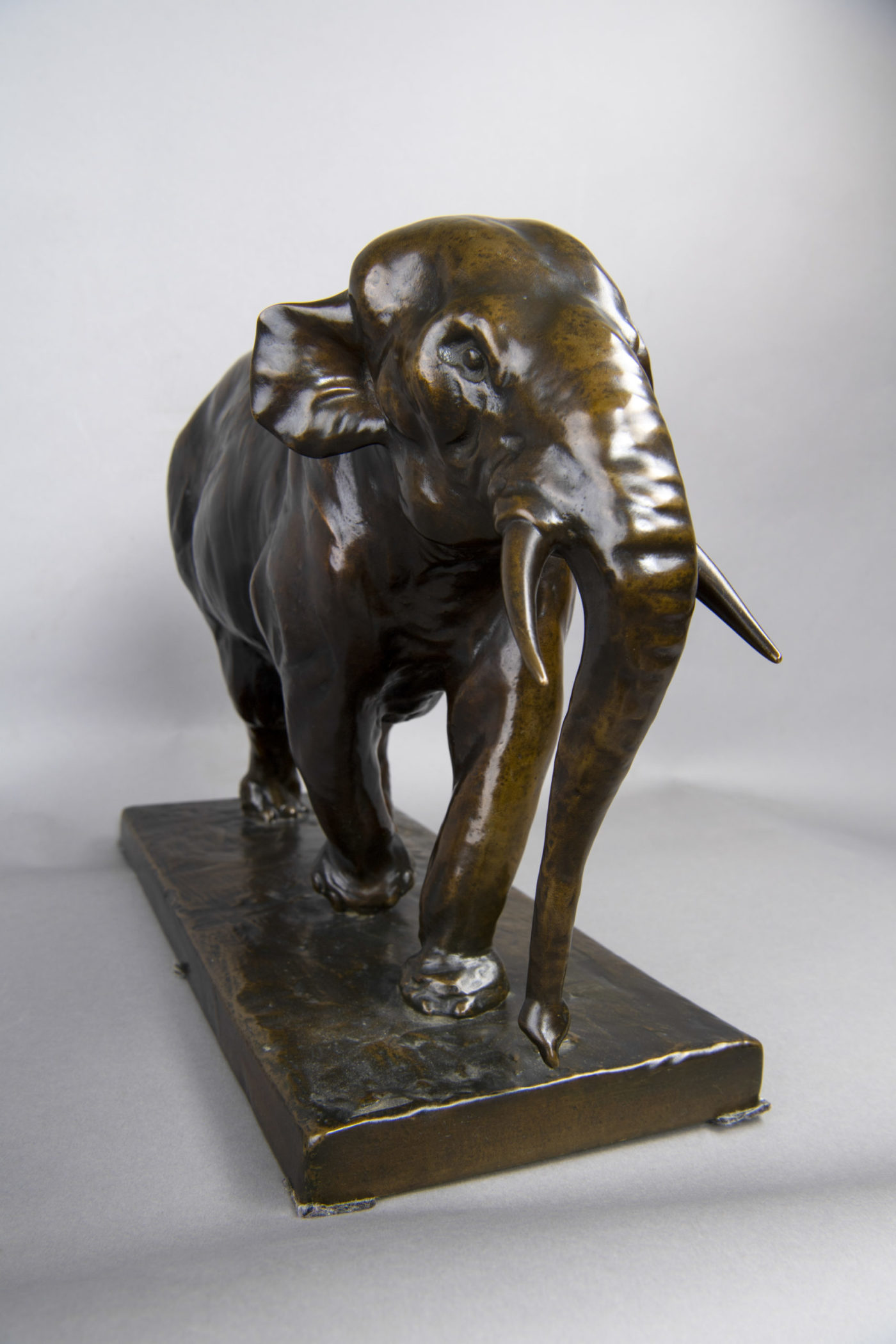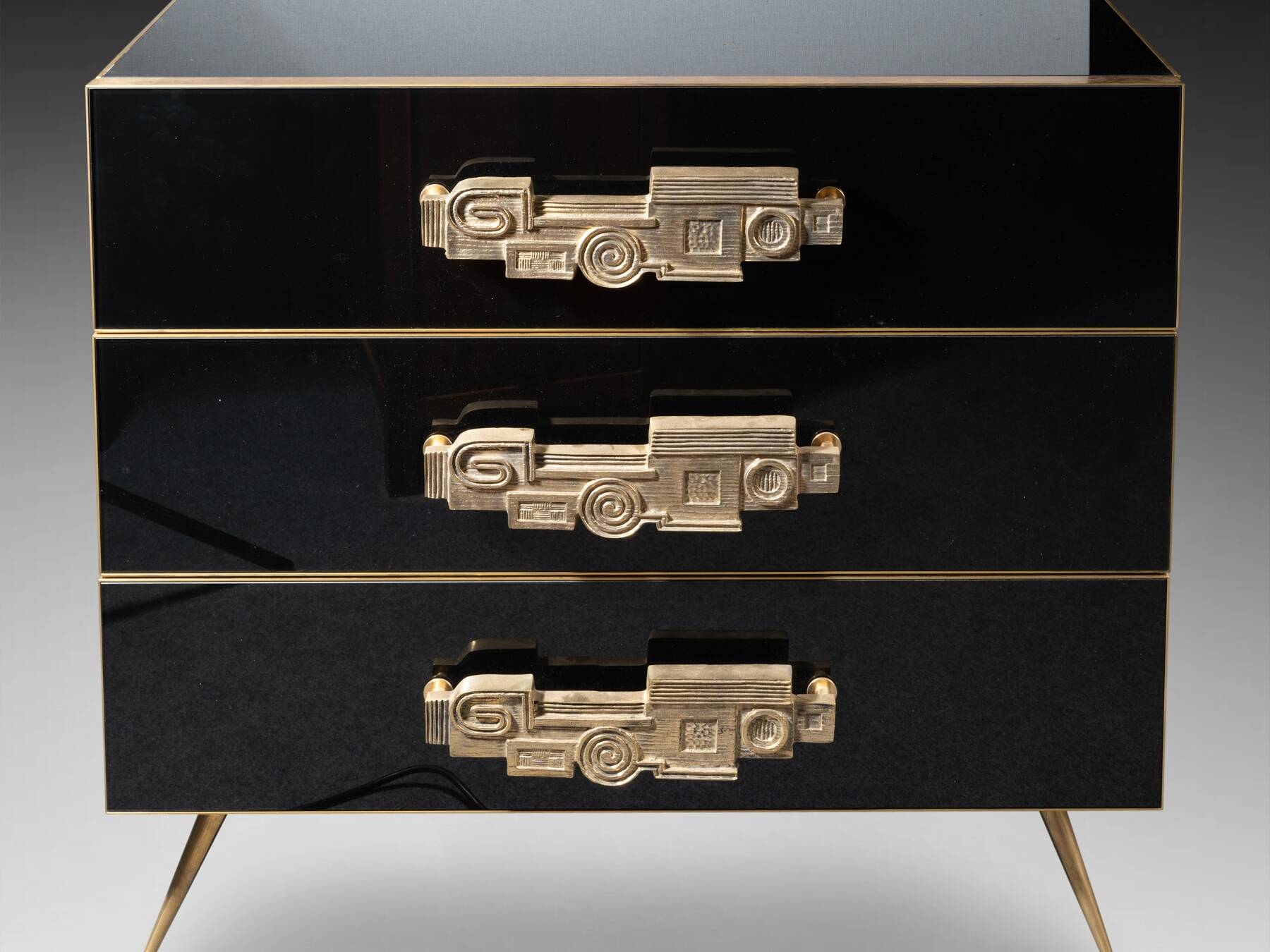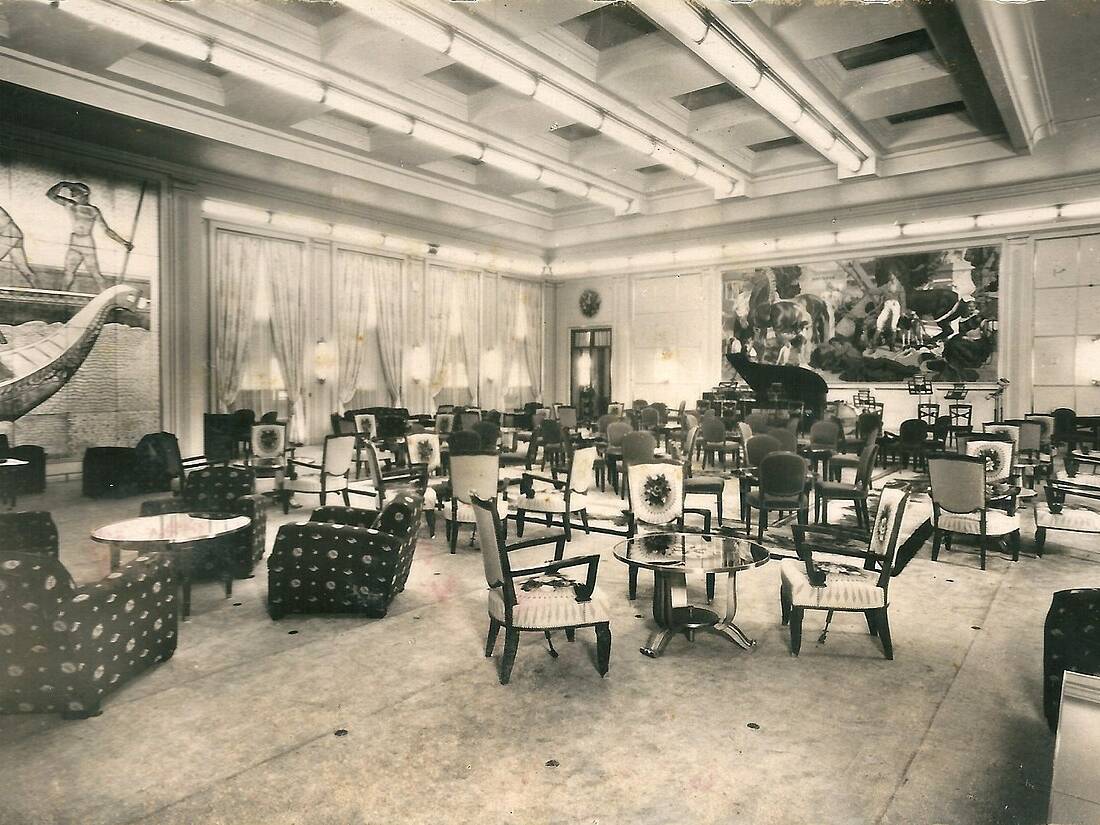Jean Gaspar: the sculptor who escaped from the Academy
Jean-Marie Gaspar (1861 – 1931) was born into a comfortable bourgeois milieu, inclined and sensitive to art. He first went to the Faculty of Applied Sciences of the University of Liège and for a time he aspired to become an engineer. The end of his first year brought an abrupt end to this path as the young man failed his exams in 1879. A failure that will allow him to finally express his true talent by throwing himself body and soul into a career as a sculptor.
Driven by his unconditional admiration of Jef Lambeaux (1852 – 1908), the famous Belgian sculptor, he tried to enter the Beaux-Arts, but failed to excel beyond the faculty. The disappointment must have been bitter but Lambeaux undoubtedly snuffed out Jean’s talent and accepted him as a student in his workshop.
This training outside the traditional academic path is only allowed by the financial means of his family, which allow him to finance this private education.
Jean Gaspar is certainly talented, but the financial comfort and support of his family was indispensable. Without them, it is certain that this training outside the traditional academic path would have been unthinkable; private education was indeed not within the reach of all scholarships.
Concerned about their child’s success, Jean Gaspar’s parents had a workshop set up in 1893 in the garden of their new home (now the Gaspar Museum) in Arlon, Belgium.
It was in 1889 that his artistic career officially began at the Universal Exhibition in Paris. This is how the French public was able to discover a bronzed plaster cast entitled Abduction depicting two men on horseback arguing over a pulled woman. Most probably exhibited in one of the galleries of the Palais des Beaux-Arts, this work, which won a bronze medal, has unfortunately disappeared.
However, it seems that the young man has left his mark on people’s minds because as early as 1893, the art critic Olivier-Georges Destrée (1867 – 1919) praised the young sculptor and considered him as one of the most remarkable sculptors of the contemporary period. With his career now launched, Jean Gaspar multiplies exhibitions and at the same time initiates a decisive turning point: his choice is made, he will devote himself almost exclusively to animal sculpture.
Jean Gaspar : animal sculptor
In order to capture the animal nature of his new models, he assiduously visits the Antwerp zoo, circuses, menageries and avidly reads Kipling’s works. The archives of the Musée Gaspar bear witness to this.
He works “on the spot”, making few animal sketches. Once adult, he hardly draws anymore, at least very little. He prefers his memory to pencil and many of his essays did not go beyond a miniature sketch in clay.
Olivier-Georges Destrée, who has seen his school notebooks “illustrated” with drawings, testifies to the genius that emanates from reared horses, battles of the titans, Homeric wars. Once again, the critic states: “His imagination is splendid, prolific, incoercible. These astonishing notebooks contain the germ of all his work, he who never had a drawing class”.
In order to capture the animal nature of his new models, he assiduously visits the Antwerp zoo, circuses, menageries and avidly reads Kipling’s works. The archives of the Musée Gaspar bear witness to this.
He works “on the spot”, making few animal sketches. Once adult, he hardly draws anymore, at least very little. He prefers his memory to pencil and many of his essays did not go beyond a miniature sketch in clay.
Olivier-Georges Destrée, who has seen his school notebooks “illustrated” with drawings, testifies to the genius that emanates from reared horses, battles of the titans, Homeric wars. Once again, the critic states: “His imagination is splendid, prolific, incoercible. These astonishing notebooks contain the germ of all his work, he who never had a drawing class”.
Sander Pierron (1872 – 1945), a Belgian writer, also makes a striking portrait of him: “He is the most psychologist of our animal lovers. He makes elephants, tigers, wild boars, as he would do portraits; he scrutinizes the moral character of the model, as he copies her physical appearance”.
Finally, Eugénie De Keyser (1918 – 2012), art historian and essayist, talks about a psychologist who makes animals. Nothing less.
In his workshop, Jean Gaspar shapes and creates clays and plasters of rare dynamic strength. Each animal takes life under its hand, a talent that exalts the patient observation of the wild animals he sculpts. Although little known in France, his talent is still compared today to that of an Italian Rembrandt Bugatti (1884 – 1916) or a Luxembourg Auguste Trémont (1892 – 1980).
Jean Gaspar, brilliant and tormented artist
The interpretation of animal expression, the deep sense of movement and attitudes, the almost perfect understanding of the psychology of his subjects testifies to a sensitivity on the skin of this genius sculptor.
As depressed as his father Alphonse was, Jean Gaspar lived a tumultuous family life. Very attached to his works, he suffers from separating from them. His wife Irma always suffered from her husband’s asocial character, who constantly sought solitude, to the point of moving to Ixelles in July 1918, shortly after the creation of our bronze.
Irma will always be the first admirer of her husband’s work and although the couple eventually separate, she will always defend Jean Gaspar’s cause. Charles, John’s brother, ensured that John never lacked for anything.
Yet Jean Gaspar was always mired in a noxious feeling of loneliness and abandonment. In spite of his success, numerous commissions since his beginnings, the friendship of Jef Lambeaux and that of a few friends including the poet Georges Marlow (1872 – 1947), Jean became increasingly isolated. As an alcoholic, he tortured himself, not being able, according to him, to give back his feelings and impressions, whereas in artistic and academic circles his work won general admiration. He destroyed many models or did not finish them, often disappointed or furious with himself.
Despite this withdrawal from the world, Jean Gaspar exhibited frequently. In 1905 at the Cercle “Pour l’Art” in Brussels, he presented a larger than life bronze Lioness.
He later participated in numerous exhibitions: in Brussels, the Triennial Salon (1914), the Jubilee Salon of La Libre Esthétique (1908), the Artistic Circle, the Giroux Gallery in Brussels (one of the most important art galleries in Belgium), the Salon of the Academy of Drawing of Saint-Gilles, the Cornet (in Uccle); in Antwerp, the Triennial Salon of 1908, the Society for the Encouragement of Fine Arts of Antwerp ; in Charleroi, the Exhibition of 1911, the Fine Arts Group; in Liège, the Salon du Palais des fêtes in 1927 and also in Paris, Lyon and Lille, Liverpool and Edinburgh, Scheveningen, Venice (Grand salon of Belgian artists), Chile (Centenary of the country’s Independence). At the Salon du Cercle artistique in 1923, it brought together seventeen bronzes and plasters to which no less than three rooms of the Palais des Expositions at the Cinquantenaire in Brussels were dedicated.
He exhibited various wild or domestic, exotic or indigenous animals at these events. These are studies of elephants, a jaguar on the lookout, a feline sniffing a trail, a leaping puma, a group of lionesses, buffalo charging or roosters, horses, a wounded boar, a braying deer, dogs or a raging bull.
Gaspar sacrificed part of the works of his first period which was not exclusively animal. These sculptures, although admired by his friends, were severely judged by the artist, who considered them unworthy of what he intended to achieve.
The Royal Museums of Fine Arts of Belgium in Brussels acquired animal works, demonstrating the interest in Gaspar’s work. The African Elephant on the march (bronze) and the Lioness were acquired. The Panther (1895), is still in place in the Botanical Garden of Brussels, near the monumental staircase. The Charging Buffalo (plaster) is at the Veterinary School of Cureghem (Brussels).
It was during a detoxification cure that Jean Gaspar died on February 17, 1931 at the Clinique Sainte-Elisabeth in Uccle where his wife was trying to have him treated. Although she lived far away from him, Irma tried all her life to take care of him.
From February to September 2019, the Musée Gaspar organised an exceptional retrospective exhibition of the sculptor’s work. In addition to the museum’s collections, this exhibition brought together many sculptures in private hands that had never before been shown to the public. A large space was given on this occasion to Jean Gaspar’s elephants, among which we were able to find a proof identical to ours, which has now joined a private collection.
Marielle Brie
Art Historian for Art Market and Cultural Media
Author of the blog Objets d’Art et d’Histoire
Autres ressources et documentations
28 June 2025
Plaster Sculptures, Plaster Casts
For a long time, plaster casts suffered from a poor reputation. Often regarded as crude replicas, and sometimes even dismissed as inexpensive imitations, they nonetheless had…
17 April 2025
The Middle-Ages Furniture
Rare and highly sought-after, Middle-Ages furniture is making a strong comeback. An overview of this market, where enlisting the guidance of a professional is strongly advisable.
18 March 2025
Murano Glass Furniture
Since the beginning of the 20th century, Murano glassmakers have been exploring new horizons. After classic lighting and decorative art, Murano glass is now used to adorn…
16 December 2024
A bronze triton after the sculptures of François Girardon (1628 – 1715) in Versailles
This fountain element is all the more admirable as it is sculpted after the masterpieces of the Pyramid Basin, on the parterre of the North Wing of the Versailles gardens.
18 November 2024
Tyco Bookcase, by Manfredo Massironi, for Nikol International
A pure creation of optical art research in the 1960s, the Tyco library shelf designed by Manfredo Massironi invites the viewer to bring the work of art to life on a daily basis.
3 August 2024
The Ocean Liner Style
In the 20th century, the immense ocean liners connecting the Old Continent and the New World were ambassadors of tastes and innovations on both sides of the Atlantic.













